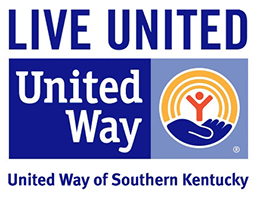Our History
We hope you find this timeline helpful in understanding the local anti-rape movement and Hope Harbor’s role in supporting survivors and addressing violence in south central Kentucky. To learn more about the national movement, visit the National Sexual Violence Resource Center’s website.
The organization we know as Hope Harbor today all began with the grassroots evolution of the anti-rape movement in Kentucky in the 1970s.
The first rape crisis centers in the United States opened in the early 1970s, and the movement’s momentum led to legislature to protect survivors of sexual violence. Among the first laws enacted was the Rape Shield Law (1978), which protected survivors of sexual assault from being questioned about their irrelevant past sexual histories during a court case involving an assault they experienced. During these years, rallies protesting violence against women began to develop first in Southern Florida and next in San Francisco. These rallies would lead to the nationwide movement that became known as Take Back the Night. These initial progressions and the existing lack of others laid the foundation for Gwynn Stewart and Karen Schmalzbauer in founding Hope Harbor.
By the 1980s, Kentucky was at the forefront of funding services for survivors of sexual violence.
Still, following a traumatic assault, cofounder Gwynn Stewart was appalled by the lack of resources available to those who had survived traumatic events such as hers. A few years after her assault in 1980, Gwynn and her friend Karen Schmalzbauer decided to take matters into their own hands and start providing these much-needed services to survivors. They achieved this goal by founding the Bowling Green-Warren County Rape Crisis and Prevention Center (now known as Hope Harbor) which officially incorporated in 1985. In reality, the wheels had been in motion prior to the official incorporation, with the cofounders having been provided $500 in funds from the local board of realtors before 1985. With this small sum of money, Gwynn and Karen kickstarted the 24/7 crisis line that exists as a critical service Hope Harbor provides today. The two covered every shift on the crisis line until they were able to recruit volunteers. This advocacy that started officially in 1985 would become a pillar of the anti-rape community within the state. On the national front, the Victims of Crime Act (VOCA) was passed by Congress in 1984. VOCA would become one of the principal means of financial support for organizations providing essential services to survivors of sexual violence, including Hope Harbor, in coming years. Take Back the Night rallies and marches began to pop up in more and more places across the nation, and the first march in Bowling Green happened in the 1980s. Take Back the Night would become one of Hope Harbor’s most popular public events for years to come.

In 1990, Hope Harbor received its first funding from the Victims of Crime Act. That same year, what we know as the Kentucky Association of Sexual Assault Programs (KASAP) was founded.
KASAP is Kentucky’s coalition of the 13 rape crisis centers within the state committed to the support of survivors of sexual violence. During this time, state legislators began to hear the cries of advocates. As a result, in 1996, the definition of what constituted forcible rape was clarified and legally changed in the state’s penal code, making it more inclusive. Specifically, the idea of “forcible compulsion,” which was required to press forcible rape charges, was clarified to include both physical force and threats of physical force. Additionally, legislation in that year made victim advocates available in all offices of Commonwealth Attorneys, establishing services for survivors within the legal realm. Finally, legislation was enacted to establish statewide Sexual Assault Nurse Examiner (SANE) credentialing for nurses within the Commonwealth. Kentucky was the first state in the nation to do so. Hope Harbor-led events like Take Back the Night gained popularity and signified the importance of Hope Harbor’s role within the Bowling Green community.

Hope Harbor kicked off the new millennium by changing the organization’s name from the Bowling Green-Warren County Rape Crisis and Prevention to its current name, Hope Harbor.
The justification behind the name change stemmed from the well-established lighthouse logo. The staff believed a nautical-themed name fit alongside the lighthouse. In this way, both the name and logo of the organization illustrated the organization’s purpose – to serve as a safe haven for survivors of sexual violence.

The anti-rape movement continued to gain steam in Kentucky, as reports circulated that one in nine adult women in Kentucky reported having experienced forcible rape, although professionals within many sectors of the Bowling Green community were doubtful of its pervasiveness here. According to Melissa Gilpin, SANE nurse, the discourse during the early 2000s in Bowling Green within the medical field was that “there just aren’t that many cases”, implying that Bowling Green and its quaint, family-friendly feel were the exception to the numbers reported throughout Kentucky at the time. Tragically, in 2003, the community experienced a wake up call like no other when eighteen-year-old WKU freshman Katie Autry was brutally beaten, raped, and set on fire in one of the university’s dormitories. Melissa Gilpin described this horrific event as a catalyst in developing a better community response to sexual violence. Policies within Housing and Residence Life at WKU as well as the BG Police changed in hopes of preventing assaults from happening in the future. The same professionals doubtful of the existence of sexual assault cases in Bowling Green came to realize they were unequipped to handle such cases. “We as a community failed in the case of Katie Autry. We realized we needed to do a better job at building an effective response to sexual assault,” Gilpin stated.
Between Katie Autry’s murder in 2003 and trial in 2005, the first SANE (Sexual Assault Nurse Examiner) nurses became certified, and the state government provided funds to complete the training to incentivize a solid starting population to lay the foundation for the standard SANE nurse training in place today. That said, the program was brand new and only four nurses went into training in 2004. The nurses were first made aware of Hope Harbor during this training and began to brainstorm ways to collaborate with such a nuanced resource for sexual violence cases. The hospital staff met with Phyllis Milspaugh, the Executive Director of Hope Harbor at the time, for the first time shortly thereafter. Moving forward, an open line of communication was established between medical services and advocacy. This established the role of Hope Harbor advocates in providing support for sexual assault survivors in hospital settings, a role that has been predominately filled by volunteers.
Within the medical system, “healthcare is often reactionary; prevention is normally an afterthought,” said Gilpin. While medical professionals were doing their best in reacting to cases of sexual violence as they occurred, the effectiveness of the first sexual violence prevention programs was being tested. In 2009, KASAP recruited 26 high schools to participate in a statewide intervention trial funded by the Centers for Disease Control and Prevention (CDC) to test the effectiveness of Green Dot, a prevention-based program developed at the University of Kentucky. Green Dot teaches its participants to safely intervene or interrupt situations that indicate high risk of violence. This trial would begin in 2010 and end in 2014, following the same participants throughout high school (see 2010s).

The Center for Disease Control and Prevention (CDC) conducted their National Intimate Partner and Sexual Violence Survey for the first time in 2010. KASAP laid out the resulting Kentucky-specific statistics during that same year to aid in guiding the efforts of the 13 rape crisis centers within the state, including Hope Harbor.
As of 2010, 47.7% of Kentucky women had experienced sexual violence in some form during their lifetime. These jarring statistics emphasized yet again the importance of the development and distribution of educational prevention-based programs like Green Dot within school settings.
Beginning in 2010, Hope Harbor implemented Green Dot with over 200 students at Warren East High School in accordance with the statewide trial. Trained staff from regional rape crisis centers within Kentucky continued to implement Green Dot within their local schools for the next 4 years. Upon the trial’s completion in 2014, results showed that schools where Green Dot had been implemented by rape crisis center staff reported significantly lower rates of violence and victimization when compared to schools where Green Dot had not been implemented. In fact, incidents of violence and victimization were found to increase in the schools that did not receive the Green Dot training. While Hope Harbor is often heralded for its direct services to survivors of sexual assault like counseling, legal advocacy, and in-hospital advocacy, the prevention and education component, which encompasses Green Dot interventions in schools, represents an equally as important aspect of services that Hope Harbor provides.
Hope Harbor continued to develop new and innovative ways to serve survivors in the 2010s. As a result, plans to create a therapeutic garden onsite were put into action in 2016 with the creation of Hope Harvest. Hope Harvest provides an opportunity for volunteers and clients alike to gain experience in garden maintenance and take home produce grown without the use of chemicals. The therapeutic garden also proved to serve as a means for community engagement. Before the garden, group volunteer activities were limited and often turned down. Hope Harbor’s reach in the Bowling Green community has been greatly extended by having community groups from WKU, local churches, Girl Scout Troops, and businesses volunteer at Hope Harvest.
In March of 2020, the COVID-19 pandemic suspended in person services provided by Hope Harbor. However, the “new normal” of conducting events virtually that followed allowed for new programs and services to develop.
Trauma-informed yoga, online support groups and events with other organizations across the state, a podcast (Still Not Asking for It), and a blog (Thanks for Asking), are among such programs and services aimed at reaching a wider audience during these stressful times. The most up to date information on all things Hope Harbor-related can be found on Twitter and Instagram @HopeHarbor and Facebook if you search “Hope Harbor Inc.”

